 Many Americans think there isn't a holiday like Halloween in Italy... but there is. On November 1st, Italians celebrate La Festa di Ognissanti, or All Saints’ Day. This is a national holiday when post offices, banks, and schools close, as well as being a Catholic holiday honoring all of the saints, martyrs and ancestors who have gone before. Italians will decorate and light up their cemeteries for Ognissanti, but in recent times they also carve pumpkins and even dress up for local festivals. A common tradition is to for a family to visit the cemetery after a special feast, to visit the members of family passed, leaving a tray of food for them to enjoy at their tomb. This visit leaves their home empty so that the dead could come back for a short visit, but without either the living or the dead disturbing each other. Families return to their homes and the dead return to their graves after church bells are tolled. Depending on the region of Italy, some burn bonfires and kids might do something like Trick or Treating from home to home (chanting "Morti, Morti") and receive treats. There are many variations throughout Italy, some even predating Halloween traditions. Many leave food out all night in case the dead want to come back home and feast while they sleep. Here are some Italian words to tide you over during this interesting holiday...  Una Strega - Witch Scopa - Broom Pipistrello - Bat Ragno - Spider Osso - Bone Cranio - Skull Grondone - Gargoyle Spaventoso - Scary Sinestro - Scary Diavolo - Devil Vampiro - Vampire Fantasma - Ghost Foletto - Goblin Mostro - Monster Lunu Mannaro - Werewolf Frankenstein - Frankenstein Zombie - Zombie Mummia - Mummy Casa Infestata - Haunted House Zucca - Pumpkin Jack-o-Lantern - Jack-o-Lantern Costume di Halloween - Halloween Costume Dolcetto o Scherzetto - Trick or Treat Morti - The Dead One of the more intriguing aspects of the Venice Carnevale is the beautifully fantastic cartapesta masks attendants wear. Many are colorful, feathery, glittered and elegant. But there is one long, bird-beaked mask that can creep out most who come across it... the Medico della Peste or Dottore Peste (plague doctor). This birdlike mask wasn't originally designed for the pleasures of Carnevale, but in fact was was invented in the 17th century by French physician Charles de Lorme to protect doctors airborne bacteria and viruses while treating victims of the plague. Carnival goers eventually started wearing a decorated version called Memento Mori, to remind them of their own mortality. In the 1600s, the beak was to be filled with aromatic and medicinal herbs to protect them from putrid air, which at that time was seen as the cause of infection. Often the city or town paid their fees, and some plague doctors were known to charge patients and their families (especially the wealthy) additional fees for special treatments for false cures. These so called "doctors" were often lay people without medical training, their only apparent useful purpose was in detailing and recording how many of the population were actually affected by plague. Even though these plague doctors offered little real healing, their value to the ruling class and local governments were overly inflated. In Florence and Perugia, doctors were often asked by officials to perform autopsies to help determine how the plague played a role. The city of Orvieto hired plague doctor Matteo fu Angelo in 1348 for four times the normal annual rate of a traditional doctor. Pope Clement VI hired several extra plague doctors during the Black Death to attend to stricken in Avignon. Of 18 doctors in Venice, only one was left by 1348: five had died of the plague, and 12 were missing and may have fled. Their special costume were first used in 1630 in Naples, and spread to be used throughout Europe. The spooky attire consisted of a light, waxed fabric overcoat, a mask with glass goggles and that frightening beak. They carried a scalpel for cutting open blisters (the goggles protected their eyes from the spatter) The wide brimmed hat identified most doctors during this time. Around their neck they wore a pomander which contained more herbs and aromatics--again, to protect themselves. They also kept and chewed raw garlic whenever near the inflicted. Their long cloak went nearly to the ground and was waxed heavily to ward off damp and fleas--possible carriers of the disease. They also carried a long cane to poke and probe patients during examinations and treatments, to avoid actually touching them. As mentioned earlier, that beak was stuffed with herbs, straw, and spices. The scented materials included juniper berry, ambergris, rose hips, mint, camphor, cloves, laudanum and myrrh.
Historic facts prove that these charlatans in their scary costumes did little to heal or prevent the plague in Italy. The Italian Plague of 1629–1631 was a series of outbreaks of bubonic plague which ravaged northern and central Italy. This epidemic claimed possibly one million lives, or about 25% of the population in these regions. Verona lost over 60% of its citizens. Milan lost 46%. In Venice, one third died. Stay healthy, amici. --Jerry Finzi  Schillizzi Schillizzi Enzo Schillizzi (b 1955 - d 2009) lived in the small Albanian-Italian village of San Costantino Albanese above the banks of the Sarmento River. The artist spent almost all his life in this small village just outside of Potenza, painting the local life and culture in murals all around the area. His work focused on the cultural symbolism of arbëresh tradition and folklore, especially on religious rites, for example, illustrating Nusazit, the pyrotechnic puppets of the saints day of San Constantino Albanese. Proud of the region's heritage, he recorded his impressions of the romantic and violent history of Basilicata and the briganti, robber/rebels who ran rampant during the post-unification period if Italy. Other subjects were his own interpretations of of painters such as Velasquez and Picasso. Some works are childlike, with indeed a Picasso-esque loose hand, while others show his extraordinary skill as a draftsman. After his untimely death, in July 2009, an effort has been made to research, document and restore and preserve his wonderful murals in addition to paintings privately owned. His colors often remind the viewer of the muted and natural palette from Basilicata itself--wheat, the varied tones of greens from the mountains and valleys, and the more vibrant colors of sky and flora. This research has been possible through the efforts of family and friends, who helped to identify and search out several paintings and gain permission of the owners to allow photographing them for posterity. Despite his works being dispersed in various places, a significant number still remain in San Costantino in private collections houses and in public spaces. Some his more complex works remind me of the work of Mexican muralist Diego Rivera while others have a mix of abstract and cubism in their compositions. After seeing his work, I'm convinced that his imagery would be well suited to ceramics and mosaic tiles. The town of San Constantino is blessed to have much of his work on public display, honoring their wonderful heritage. --Jerry Finzi MICHAEL*AGELUS*BONAROTUS*FLOREN*FACIEBA MICHAELANGELUS BUONARROTI FLORENTINE MADE THIS The Pieta (passion or pity) showing the Holy Mother Mary holding the lifeless body of her son Jesus, is the only sculpture that Michelangelo ever signed--on the sash across Mary's breast. When I first saw the Pieta at the 1963 Worlds Fair in New York, I noticed this signature and can remember thinking, "What a bold place to sign a piece of art"... Michelangelo was only 24 when he sculpted this masterpiece. He was young and proud, perhaps even cocky about his skills. I can relate to this. I left school early, and at 17 got a job as a sculptor's apprentice in a metal sculpting studio that designed churches around the world. I was so cocky about my own skills, I couldn't live with making sculptures to the exacting standards of the blueprints made by our studio's Master Sculptor. I knew I couldn't last long there. My mother always claimed I could draw before I talked, and as a child I dreamed of being a painter and sculptor. Michelangelo was certainly a child prodigy and also dreamed of being an artist. He stuck to his painting and sculpture and by age 21, he had moved to Rome and had already sculpted his first masterpiece, his Bacchus. For me, a cocky artist who knew he didn't want to starve in some garret somewhere in Greenwich Village (there were no future Popes or Medici supporting my artistic future), I turned to a more technical and commercial form of art--photography. At 21 years of age, I had already advanced to be a top photographer in one of the largest commercial photography studios in the country. By 24 I had opened my own photo studio in my Manhattan loft. At 24, Michelangelo had already created his Pieta. Cocky indeed--deservedly so, perhaps. Raw talent feeds this malevolent human trait, especially in youth. With more experience and gaining skills, I learned not to be so cocky (there is always something more to learn, even in later years), but Michelangelo's youthful cockiness and pride in his skills drove him to sign the Pieta in a bold manner... You see, after creating the Pieta, the sculpture was on display in the Chapel of Santa Maria della Febbre where the Sacristy stands today. When visiting his Pieta one day, Michelangelo overheard a group of Lombards critiquing his masterpiece and was enraged when he heard them attribute the work to the "Gubbo di Milano" (Hunchback of Milan), referring to Cristofor Salari, a well known sculptor 15 years his senior. Some say that this attribution lasted for quite some time before Michelangelo reacted, but many historians claim that Michelangelo went to the Pieta the same night with torch and chisels and carved his name on Mary's sash. It's curious that as he matured and gained self-confidence, Michelangelo never felt the need to sign any of his future works. I can identify with this also. It's often enough for the artist's soul just to create the work... to do his craft... to keep creating. The cockiness fades and is replaced with an internal self-confidence. When one examines the details of the Pieta closely, perhaps there is a realization that the youthful cockiness and pride was well deserved. Go slowly as you look at each one of these photos. Consider that Michelangelo has performed some sort of magical alchemy, turning stone into flesh, with the still warm veins of Jesus still containing his blood... --Jerry Finzi Copyright 2019, Jerry Finzi/GrandVoyageItaly.com - All Rights Reserved
Not for reproduction without expressed permission. “If Christ is God, He cannot sin, and if suffering was a sin in and by itself, He could not have suffered and died for us. However, since He took the most horrific death to redeem us, He showed us in fact that suffering and pain have great power.”
― E.A. Bucchianeri, Brushstrokes of a Gadfly, When I was a young, biblical epic films were all the rage, and this big, hunk of a man called Victor Mature was in a bunch of them. His sharply sculpted face and curly hair was reminiscent of ancient Roman statues displayed in the Vatican Museum. He was Hollywood's idea of "a man's man". Baring his broad chest and wide shoulders in many films, it's no wonder why women of the day saw him as a "hunk". He was born to Swiss-German mother Clara Ackley and Marcellus George Mature who had the time honored profession of arrotino--a knife sharpener and cutler. Marcellus was actually born Marcello Gelindo Maturi in the tiny Alpine hamlet of Pinzolo, Trento (one of the few autonomous Provinces), where many Maturi still live today. The young Mature started out helping his father as a salesman for butcher supplies but eventually went to Pasadena to study acting. He had modest success in a few films, but when World War II broke out, he served as a petty officer in the Coast Guard on troop transports. He was lucky to survive the war, having been in harms way in places like the North Atlantic, Mediterranean, Caribbean, Normandy and islands of the South Pacific. He was on Okinawa when the A-bomb was dropped on Japan. After the war he really made his mark, coming in big demand for some excellent roles, such as in John Ford's My Darling Clementine (1946) and in Henry Hathaway's Kiss of Death (1947). He then moved on to perhaps his most recognizable roles in Biblical epics: Samson and Delilah (1949) ; The Egyptian (1954); The Robe (1953) and one of my favorites, Demetrius and the Gladiators (1954)... great Roman sets and Gladiators! Throughout the 1960s he seemed semi-retired, playing golf more than acting, but he then landed a role that parodied himself as an egotistical, Hollywood pretty boy persona in Neil Simon's After the Fox (1966). If you haven't seen this film, do so. He's hysterical in the role... and the plot is great too, with Peter Sellers as a gold thief passing himself off as an Italian film director who manages to get the population of an entire coastal town to help him steal the gold.
Victor Mature was one of the most under-rated actors of his time... in a way, similar to the pathos that even Dean Martin brought to the screen after his Martin & Lewis days were over. His films are worth searching out. Mature died of cancer at his Rancho Santa Fe, California, home in 1999. --Jerry Finzi Italy is know for passionate people, and Antonio La Cava from Matera is one of them. He's passionate about sharing the glory of books with children. La Cava carries a telling surname, as Matera is the city of caves, or Sassi, when people have been living in cave homes for tens of thousands of years. Retired as a schoolteacher after 42 years but couldn't stop spreading knowledge to il bambini of his region of Bacilicata. So in 2003 he bought a used tre-ruote (three wheeler) Ape mini truck and created his Bibliomotocarro, a portable library that houses 700 books. La Cava travels over 500 kilometers each week to 8 regular stops on his route. The children know of his arrival by the sound of organ music coming from his unique vehicle. The children run to greet him as if some TV star is showing up. He also funds his efforts, pays for fuel, repairs and buys the books from his own pocket. His passion for the love of the written word will be carried on--certainly by the many children on his route. --Jerry Finzi “A disinterest in reading often starts in schools where the technique is taught, but it’s not being accompanied by love. Reading should be a pleasure, not a duty.” --Antonio La Cava  by David Dalessandro from Sharon, Pennsylvania Need some guidance here, so I thought coming to my paisans at Italian Gardeners on Facebook would be a good place to go... While pulling my tomato plants today it hit me that I was alone. My knowledge of gardening, weak as it is, came most from my Father who got his knowledge from his Father who was an immigrant to the U.S. from Foggia. My grandfather worked for Carnegie Steel in Farrell, PA as a janitor for the office. Carnegie had provided a home for him at a cost of $2.200. Company homes without a bathroom were $2,000 so Pasquale went for the better model. Companies did that in those days...this was 1925. The company then deducted so much from his pay and he had a decent house where he could walk to work. Another thing the company did for employees was to provide garden space. Carnegie owned extra land in Wheatland, PA and the company would plow the land--at no cost to workers--and let employees claim part of it to put in their own garden. My grandfather took great advantage of that and every year would plant tomatoes, potatoes, beans and other vegetables that would help to feed his family. It was in this garden that he taught my Father, who then taught me. So, fast forward to today, about 80 years later. I am stuck on the Teaching Thing. My children are grown and not really interested. My daughter is in El Paso, Texas and my son, still living with us, is working to become a tennis professional. Neither are much interested in gardening.  100 year-old Portland gardener, Ulisse Edera. Photo by Keith Skelton. 100 year-old Portland gardener, Ulisse Edera. Photo by Keith Skelton. But I love it. I enjoy starting the seeds, tilling the ground, fertilizing and watching the plants grow. Because of the abundance God has provided, I also can many jars of tomato, sauce and hot peppers. Again, not because I have to, like my Grandfather had to, but because I want to. But, I am afraid that I am the last of the line. My uncles are gone. My Father is gone. My wife humors me and lets me do my thing in the garden. It bothers me that it is likely to end here. And, I fear I am not alone. No one at work talks about a garden. No one else in the neighborhood has one. Just me. It is a shame, I think, that the accumulated knowledge of at least three generations will end. Do any of you have the same concerns? Do you have children or grandchildren who work with you and ask questions and help pull weeds and can tomatoes and wonder why something is growing or not? Let me know...and if you have answers for this situation, I would love to hear them. Thank you so much, my paisans.  Passing on the tradition Passing on the tradition And my Thoughts... And I totally agree with David, which is why I've asked his permission to post his words here on Grand Voyage Italy. After all, we are #AllAboutItaly here... and we're all about the Truths about our culture. I feel David is correct--too many young people today are detached from their cultural roots and have no idea where their food comes from, especially true with Italian-Americans. When one takes a Voyage around Italy, all you see is gardens--everywhere, in tiny front yards, hanging on walls, on balconies and terraces and in pot gardens surrounding people's front doors. It doesn't matter if they have lemons and pomegranates on their patio or just a pot of basil on their windowsill--it seems that everyone grows something edible. We should all strive to teach our children the value of home grown, healthy food, like I've done for my own son, Lucas. Here's a photo of him with his tomato harvest at 4 years old... He's 15 now and looks forward to each February when we go down into the cellar, sort out our seeds and start our heirloom seeds that we save each year from our garden. He now looks forward to the tomatoes we grow as if they are old friends... Eva Purple Ball, Olivette Juane, Giant Belgium, Jersey Devil and more. He also is learning to cook using the vegetables harvested from our garden, and even when we don't grow them ourselves, he now knows how to smack a cantaloupe, listening for the lowest pitched sound (a sign of ripeness), or check a peach's ripeness with his nose, as my Dad taught me. Gardening is part of the Italian soul. Pass it on, people. Pass it on... --Jerry Finzi And for more on the subject of gardening... Creating a Hanging Italian Wall Garden
Bicycles - Italian Garden Style My New Favorite Tomato: Striped Roma San Marzano Tomatoes: Accept No Imitations! How the Tomato Became Part of Italian Culture Only in Italy: Strange Veggies from La Belle Paese To see how you can create an Italian Garden of your own, check out the Grand Voyage Italy Shop on Amazon. This painting, Portrait of a Young Boy Holding a Drawing by Giovanni Francesco Caroto (1480 – 1555) is perhaps one of the strangest portraits from the Renaissance period. Since carota in Italian means carrot, and the boy in the painting has "carrot-top" colored hair, many believe it's a self portrait of the artist as a boy. Others think it's a portrait of the artist's son. There are some who believe that to truly represent a child's drawing in the portrait, Carota asked a child to paint that part of the picture, which if true, would mean that it has dual authorship--Carota and an unknown child. This is also the painting from which Dr Harry Angelman derived the now defunct name of Happy Puppet Syndrome for children (now referred to as Angelman’s syndrome). In the painting, the boy’s happy expression and the jerky movement of the puppet of which he holds a picture, reminded Angelman of the behaviors exhibited by three young patients who had the syndrome in his pediatric ward in Warrington, England. Angleman’s syndrome is a rare genetic disorder characterized by intellectual and developmental delay, sleep disturbance, seizures, jerky movements (especially hand-flapping), and frequent laughter or smiling. It affects approximately one in 20,000 children. To add more interest to this odd painting, it was among others stolen from the Museo di Castelvecchio in Verona in 2014. Little more than a year later, the paintings were recovered in in the area of Odessa, on an island of the Dniester river not far from the partially recognized state of Transnistria, just a few kilometres away from the border between Ukraine and Moldavia. According to the Ukrainian police commissioner Viktor Nazarenko, the paintings were buried wrapped in some black plastic drop cloths and hidden behind some shrubs. (Watch the discovery in the video below). --GVI |
On AMAZON:
|






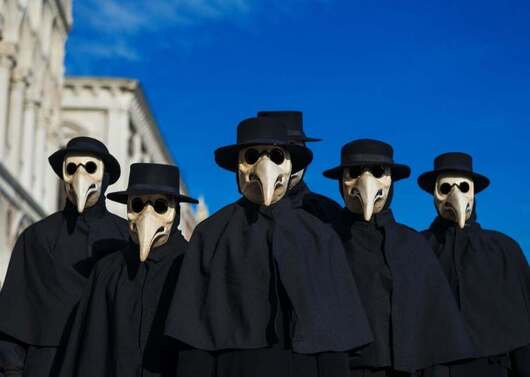





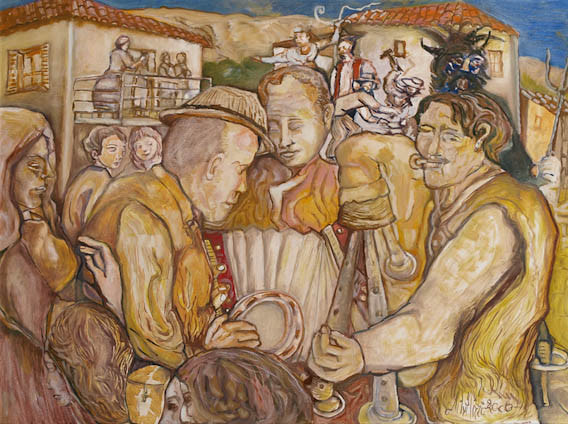

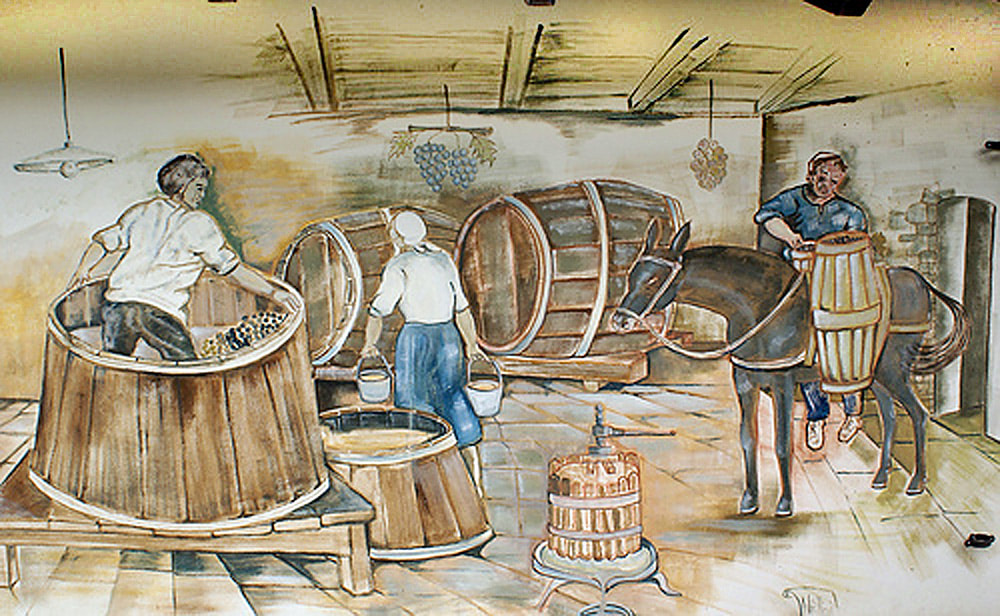











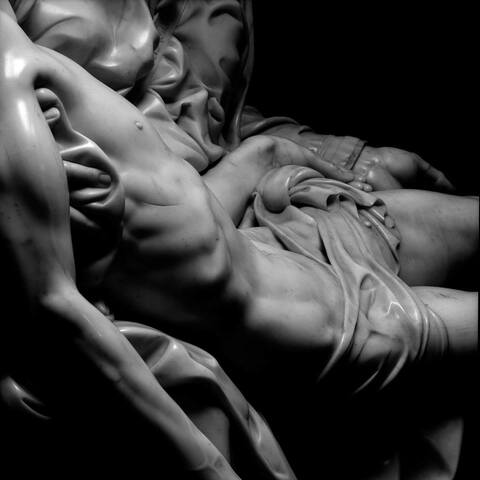


















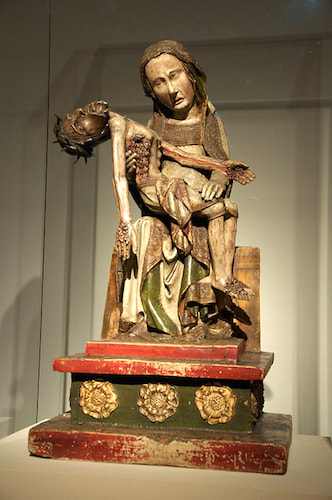

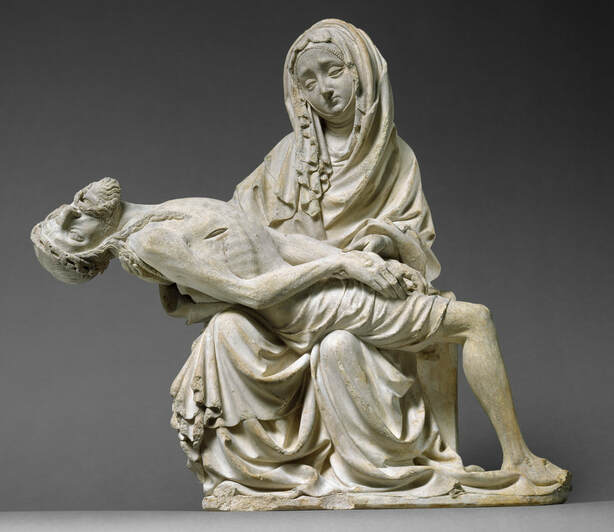


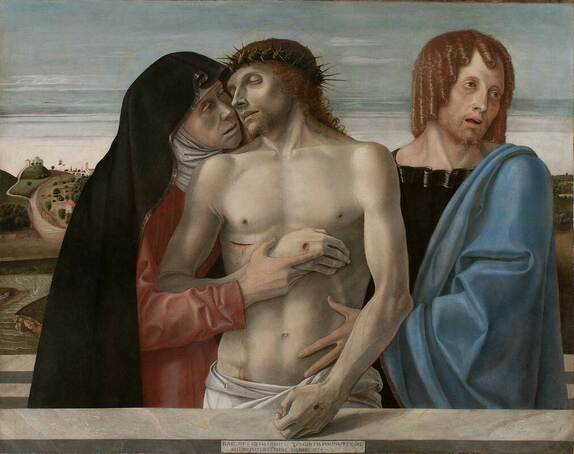




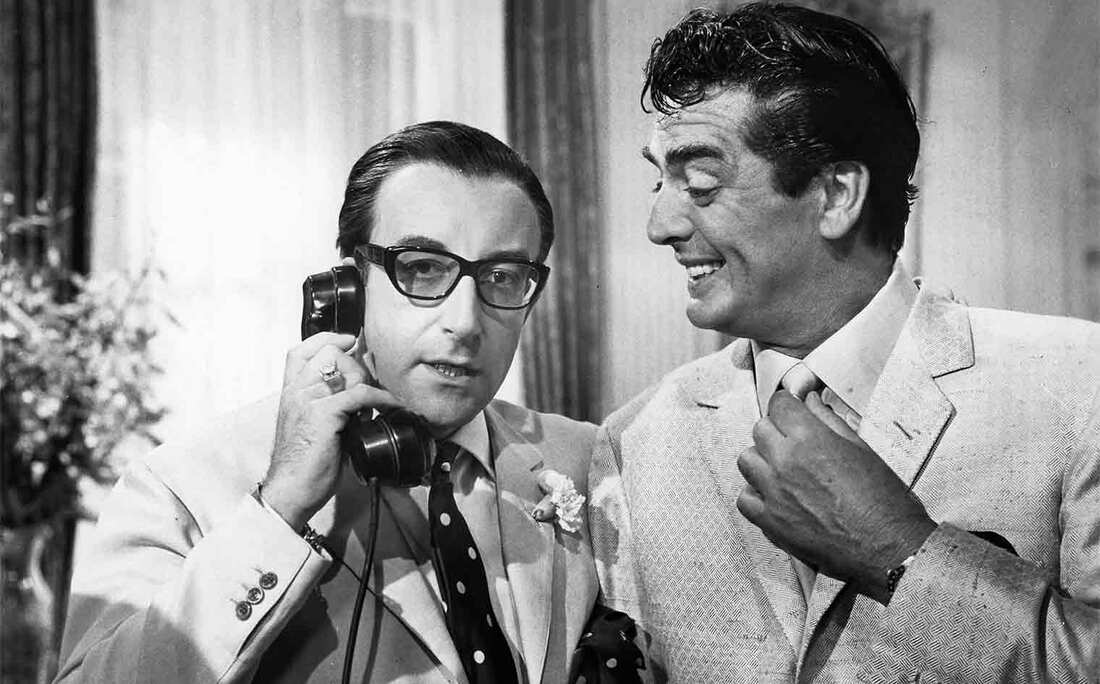










 RSS Feed
RSS Feed

